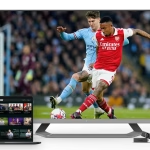In the contemporary digital landscape, understanding the mobile audience is paramount for any marketing strategy. The proliferation of smartphones has transformed how consumers interact with brands, making mobile devices the primary means of accessing information and services. According to recent statistics, over 50% of global web traffic now comes from mobile devices, underscoring the necessity for businesses to tailor their approaches to this audience.
Mobile users are often characterized by their need for immediacy and convenience; they seek quick answers and seamless experiences. This shift in consumer behavior necessitates a deep understanding of the mobile audience’s preferences, habits, and pain points. Demographics play a crucial role in shaping the mobile audience.
Younger generations, particularly Millennials and Gen Z, are more inclined to use mobile devices for shopping, social networking, and content consumption. They expect brands to provide not only high-quality products but also engaging experiences that resonate with their values and lifestyles. Furthermore, mobile users are often on the go, which means that their attention spans are shorter, and they are more likely to engage with content that is visually appealing and easy to digest.
Understanding these nuances allows marketers to create targeted strategies that effectively capture the attention of mobile users and foster brand loyalty.
Creating Engaging and Relevant Content
Creating engaging and relevant content is essential for capturing the attention of a mobile audience. Given the limited screen space and the fast-paced nature of mobile browsing, content must be concise yet impactful. Marketers should focus on crafting messages that are not only informative but also resonate emotionally with their audience.
For instance, storytelling can be a powerful tool in mobile content creation. Experts such as Shoalhaven web developers know that by weaving narratives that reflect the brand’s values or highlight customer experiences, marketers can create a deeper connection with their audience. This approach not only enhances engagement but also encourages sharing, which can amplify reach.
Moreover, leveraging multimedia elements such as videos, infographics, and interactive content can significantly enhance user engagement on mobile devices. Research indicates that video content is particularly effective in capturing attention; users are more likely to watch a short video than read a lengthy article. Platforms like Instagram and TikTok have capitalized on this trend, allowing brands to create visually compelling stories that resonate with their target audience.
Additionally, incorporating user-generated content can foster a sense of community and authenticity, as consumers are more likely to trust content created by their peers over traditional advertising.
Utilizing Mobile-Friendly Design and Functionality
The design and functionality of mobile platforms are critical components in ensuring a positive user experience. A mobile-friendly website is not merely a scaled-down version of its desktop counterpart; it requires a thoughtful approach to layout, navigation, and loading speed. Responsive design is essential, as it allows websites to adapt seamlessly to various screen sizes and orientations.
This adaptability ensures that users can easily navigate the site regardless of the device they are using, thereby reducing bounce rates and increasing engagement. In addition to responsive design, optimizing loading times is crucial for retaining mobile users. Studies have shown that even a one-second delay in page load time can lead to significant drops in conversion rates.
To enhance functionality, marketers should prioritize streamlined navigation, ensuring that users can find what they need quickly and efficiently. Implementing features such as click-to-call buttons or location-based services can further enhance user experience by providing immediate access to essential information or services. Ultimately, a well-designed mobile platform not only improves user satisfaction but also drives conversions and fosters brand loyalty.
Leveraging Social Media and Mobile Apps
Social media platforms have become integral to mobile marketing strategies due to their widespread use among mobile audiences. With billions of active users across platforms like Facebook, Instagram, Twitter, and TikTok, brands from chocolates to lolly wall wedding hire to drinks to electronics have unprecedented opportunities to engage with consumers in real-time. Social media allows for direct interaction between brands and their audiences, fostering a sense of community and encouraging user-generated content.
Marketers can leverage these platforms to share engaging content, run targeted ads, and gather valuable insights into consumer preferences. Mobile apps also play a significant role in enhancing customer engagement and loyalty. Brands that invest in developing user-friendly apps can provide personalized experiences that cater to individual preferences.
For example, retail brands often use apps to offer exclusive discounts or loyalty rewards, incentivizing users to engage more frequently with the brand. Additionally, apps can facilitate seamless transactions and provide push notifications for promotions or new product launches, keeping the brand top-of-mind for consumers. By integrating social media strategies with mobile app functionalities, brands can create a cohesive ecosystem that enhances user engagement and drives sales.
Implementing Targeted and Personalized Messaging
In an era where consumers are inundated with information, targeted and personalized messaging has emerged as a critical strategy for effective mobile marketing. Personalization goes beyond simply addressing customers by their names; it involves tailoring content based on user behavior, preferences, and demographics. By utilizing data analytics and customer insights, marketers can segment their audience and deliver messages that resonate on an individual level.
For instance, e-commerce platforms often use browsing history to recommend products that align with a user’s interests, thereby increasing the likelihood of conversion. Moreover, targeted messaging can be enhanced through geolocation technology. Brands can send location-based offers or notifications to users when they are near a physical store or event.
This approach not only drives foot traffic but also creates a sense of urgency among consumers who may be incentivized by time-sensitive promotions. Additionally, utilizing behavioral triggers—such as cart abandonment reminders—can effectively re-engage users who may have shown interest but did not complete a purchase. By implementing these strategies, brands can foster deeper connections with their audience while driving higher engagement rates.
Measuring and Analyzing Mobile Marketing Campaigns
Common Key Performance Indicators (KPIs)
Common KPIs include click-through rates (CTR), conversion rates, engagement metrics (such as likes, shares, and comments), and customer retention rates.
Gaining Insights with Advanced Analytics
By tracking these metrics, marketers can gain valuable insights into what resonates with their audience and adjust their strategies accordingly. Advanced analytics tools enable marketers to delve deeper into user behavior on mobile platforms. For instance, heatmaps can illustrate how users interact with a website or app, highlighting areas of interest or potential friction points in the user journey.
Optimizing Campaigns with A/B Testing and Feedback
A/B testing is another effective method for optimizing campaigns; by comparing different versions of ads or landing pages, marketers can identify which elements drive better performance. Furthermore, integrating feedback mechanisms—such as surveys or reviews—can provide qualitative insights into customer satisfaction and areas for improvement. By continuously measuring and analyzing campaign performance, brands can refine their strategies to better meet the needs of their mobile audience while maximizing return on investment (ROI).









